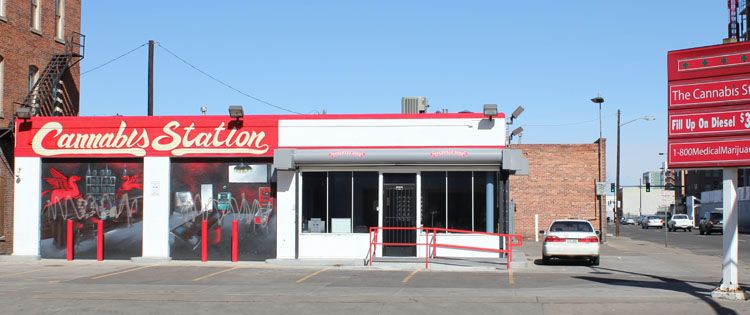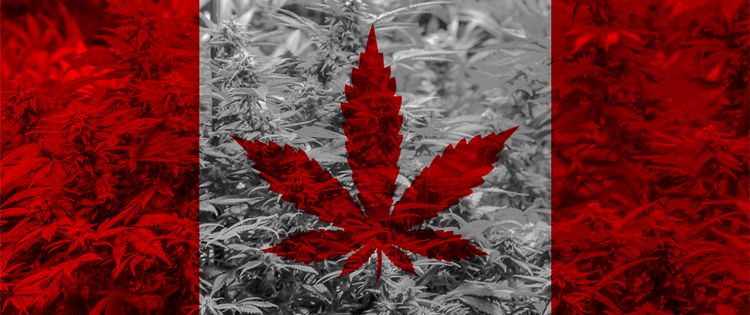As the first G7 nation to legalize cannabis, Canada has found itself in the world’s spotlight, with many looking on to see how national legalization — something that had never been attempted in a country as large as Canada — would go.
Proponents of legalization made bold predictions about the explosion of the Canadian market, the economic benefits, and the increased safety of young people.
Legalization’s opponents feared that it would increase impaired driving, fail to stamp out the black market and be available on every street corner.
A lot of it was political rhetoric, which often threatens to derail the conversation about legalization just as soon as it gets started.
But now that Canada is nearly one year into recreational legalization, are expectations lining up with reality?

Prediction: Legal cannabis will stamp out the black market
Reality: Some progress, but it’s slow
One of the most emphasized reasons for legalizing cannabis is to eliminate the black market, which opponents charge has links to organized crime, or is unsafe to consume.
One year in, the legal weed market is starting to see some gains on this front — but they’re slow.
In the first quarter of 2019, 47% of cannabis users bought at least some of their weed from legal sources. It’s not everyone, but it’s a start: in the quarter before that, only around 20% of users bought theirs legally, according to data from the National Cannabis Survey by Statistics Canada, the country’s government statistics agency.
Future quarters are expected to continue this trend, accounting for the opening of retail stores in Ontario.
One factor in the slow uptake of the legal market is the price difference. Since legalization, the price of unregulated cannabis has dropped to an average of CAD$5.93 per gram, making it nearly half as expensive as legal cannabis. As well, the heaviest cannabis users appear to be slow to adopt the legal market.
According to Statistics Canada, “obtaining cannabis from multiple types of sources was more common among daily or almost daily users” — meaning heavy users might buy some legal bud here and there but aren’t ditching their dealers just yet.

Prediction: Everyone would start smoking weed all the time
Reality: Consumption rates haven’t changed much
A common argument used by opponents of legalization is that it would promote cannabis use. While there has been some uptick of people who consume cannabis — or, people who admit to using it when asked in a survey — that increase has been pretty modest.
“From 2018 to 2019, rates of cannabis use increased from 14% to 18%,” according to Statistics Canada. The greatest increase was in men, the research finds.
Nor has legalization made stoners out of the nation. Daily users still account for about 6% of all cannabis users — which is pretty much unchanged when compared to similar statistics the year before.
That said, there are more new users coming into the fold. The most recent statistics available through the National Cannabis Survey found that 650,000 Canadians reported trying cannabis for the first time.
However, it’s too early to tell what that means for rates of ongoing use: in legal U.S. states like Washington and Colorado, similar spikes were seen initially that eventually levelled off. Researchers call this the “straw fire effect” — stats that increase but peter out pretty quickly.
Prediction: Cannabis will be available on every street corner
Reality: Retail sector remains tightly regulated
Concerns that the sale of cannabis would spread unchecked, offering greater access and a higher threat of kids getting their hands on it haven’t panned out. Cannabis retail shops have, rather, remained a pretty tightly controlled fixture on Canadian streets.
Some provinces, particularly in the Maritimes, followed a state-run store model, which gives the government plenty of control over where shops do (and, crucially, don’t) open.

Ontario has been famously cautious when it comes to stores, limiting the province first to 25 stores, and are planning to expand that to a total of 75 stores by the end of 2019.
Only in Alberta has the retail cannabis sector really taken off: there, over 200 privately run shops are open, thanks to looser restrictions around getting a licence.
Prediction: People will start driving high more often
Reality: Fears of impaired driving haven’t come to fruition
A major fear of police and legalization opponents was that greater rates of stoned driving would follow. It was enough of a fear, in fact, that the legislation that made weed legal (Bill C-45) was paired with a bill that was tougher on impaired driving (Bill C-46).
But it hasn’t really panned out. There haven’t been many studies done or much data released by police, but anecdotal reports from different parts of the country suggest no more people are driving high now than when weed was illegal.
In Kenora, Ont., for example, provincial police saw only a tiny increase in drug-impaired driving charges over the Christmas season — 104 in 2018 compared to 109 in 2019.
The more common driving-related problem? People not storing their weed correctly.
In April, the Canadian Press reported that the Ontario Provincial Police had recommended 962 charges for operating a car or boat while cannabis was stored improperly.
- Investing in Canadian Cannabis 101 - November 29, 2019
- Vacationing in Canada? Here’s What Australians Should Know About Cannabis - October 25, 2019
- How Has the Canadian Medical Cannabis Market Changed Since Legalization? - September 6, 2019


